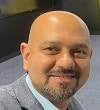One of the first things that come to mind when talking about human progress is water. It is a fundamental requirement for the existence of organic life. For humans, it is essential for sanitation and socioeconomic development. History shows how humans have thrived around freshwater bodies as they are the source of life and livelihood. However, only 1% of the water on the earth’s surface is drinkable, and 10% of the world’s population critically lacks it.
Here are some alarming findings on the ensuing water crisis in the world:
- More than 40% of the world’s population doesn’t have access to sufficient freshwater
- 1.8 billion people will face absolute water scarcity by 2025 70% of all the freshwater is used for agriculture, meaning that the freshwater crisis will lead to a food crisis
- Up to 80% of health issues are caused by inadequate water supply and the consequent poor sanitation
- MENA, sub-Sahara and Central Africa are the regions worst affected by the water crises
- Freshwater concerns have largely increased in Argentina, Brazil, Colombia, Germany, Mexico, Peru, South Korea and Vietnam
So, how do we remediate this difficult situation and make drinking water accessible to all? There is no quick fix to the issue. The answer lies in the intelligent use of data and technology at large. Backed by big data, emerging technologies have much to offer toward sustainability and eradication of malnutrition and water crises.
The role of IoT, cloud, data and blockchain in ensuring water security and accessibility
A recent report by the World Economic Forum directly correlates the accessibility of drinkable water with national security and the climate agenda. There is a dire possibility of the number of climate refugees increasing considerably in the next few years. Unless the water crisis is adequately addressed within the larger climatic goals, global security will be at risk.
When it comes to the agenda of providing clean drinking water to all, there is no such thing as too much data. The focus must be on generating as much data as possible to identify new sources of freshwater, monitor safety levels for consumption, prevent leakage and wastage and preempt shortages. In that quest, leveraging the advancements in IoT, AI/ML-powered data analytics, cloud-based data solutions, and blockchain is crucial.
Quality assessment: Extensive digitization and IoT-enablement of water sources, pipelines and end points are the immediate needs. While various governments and enterprises have initiated it, the process must be expedited to shape outcomes that have global coverage. For instance, smart meters and sensors are innovations that generate invaluable data on the fitness of water for consumption and its salinity, turbidity and oxygen concentration. They also monitor the pollutants/contaminants in the water caused by natural disruptions, corrosion in the pipeline or external malfunctions.
Infrastructure monitoring: Similarly, smart sensors and IoT devices can monitor water consumption and track usage patterns in real-time. This information can be used to identify areas of high usage and detect leaks or other issues that may impact water accessibility. Also, IoT devices can monitor water infrastructure, such as pipes and pumps, to detect vulnerabilities before they cause problems. This can ensure equitable distribution of water and prevent shortages.
Resource planning: Geographic information systems (GIS) can map water resources and infrastructure such as water treatment plants, wells and pipelines. This information helps identify areas that lack access to clean water and, therefore, prioritize requisite measures for that area. This enables public utility corporations to plan for drought-prone regions, predict future water demands, optimize distribution, and prevent crises.
Transparent and verifiable data: Typically, multiple parties are involved in managing the clean/drinkable water value chains. They must work together. In this quest, verifying data between these parties is critical for compliance and risk management. Blockchain technology can ensure that trusted information is shared across the ecosystem.
IoT enablement of freshwater generation and supply infrastructure – within a country or across countries – will generate zettabytes of data. Advanced data warehousing and analytics will become critical to the process and glean insights and action points. This is where cloud computing becomes imperative. The data generated by IoT devices can be transmitted directly to the cloud and processed in real-time for both immediate and long-term, informed decision-making.
In conjunction with AI/ML, the possibility of what can be achieved via the cloud widens exponentially. IoT-driven, AI/ML-enabled cloud deployment can automate repetitive tasks. This will hasten the water generation and supply processes. Advanced cloud platforms such as SAP Business Technology Platform (BTP) can help integrate all the components of water sourcing, monitoring and supply on a unified dashboard. This will provide all the necessary information in one place and simplify executing action plans.
SAP Datasphere + HCLTech Cloud: The best of both worlds
SAP Datasphere is a comprehensive cloud solution that facilitates data storage, governance and analysis. The solution helps enterprises optimize data and use critical insights for desired outcomes. The potential of Datasphere is immense in the case of water supplies when compounded with HCLTech’s AI capabilities. It will generate deep insights into the equipment condition and usage trends for governments, NGOs and corporations to take appropriate, corrective and preventive measures.
The use case requires:
- Sensor data (such as water quality parameters including oxygen concentration, pressure, and flow coming in from devices like smart meters)
- Asset data coming in from SAP
- GIS data coming in from ArcGIS
- Image data coming in from drones/CCTVs
This implies seamlessly consuming structured and unstructured data. Furthermore, before meaningful insights can be gleaned, we must have multiple data integrated and cataloged with semantic modeling, data warehousing and virtualization. This requires specialized, world-class software such as SAP Datasphere to ensure real-time insights can be converted into actions, e.g., stopping water supply from a pipeline where pollutants beyond permissible limits have been identified.
Another critical aspect of this use case is where a subcontracted party conducts manual tests. These tests' results must be shared and verified across the ecosystem. SAP Blockchain Business Connector on SAP BTP allows easy integration into business applications and enables the orchestration of cross-company workflows. Freshwater tests can be scanned via a simple mobile app and instantly recorded as tamper-proof data. They can then be shared across heterogeneous landscapes between cities, states, federal governments, consumers and private companies.
HCLTech has a long and rich history of returning to the communities. It is committed to delivering sustainable, long-lasting impact through strategic actions and providing end-to-end assistance to governments and corporations with advanced technologies.
IoT, data, cloud, AI and blockchain can help millions struggling to access usable water worldwide. A strategically orchestrated implementation of these technologies will ensure that drinkable water is neither wasted anywhere nor scant. By using data-driven approaches to manage water resources – such as the ones used by HCLTech with SAP Datasphere – public utility corporations can make the world a tad more habitable for all.
Learn more about how HCLTech leverages SAP Datasphere and SAP BTP to solve major ESG problems worldwide.






